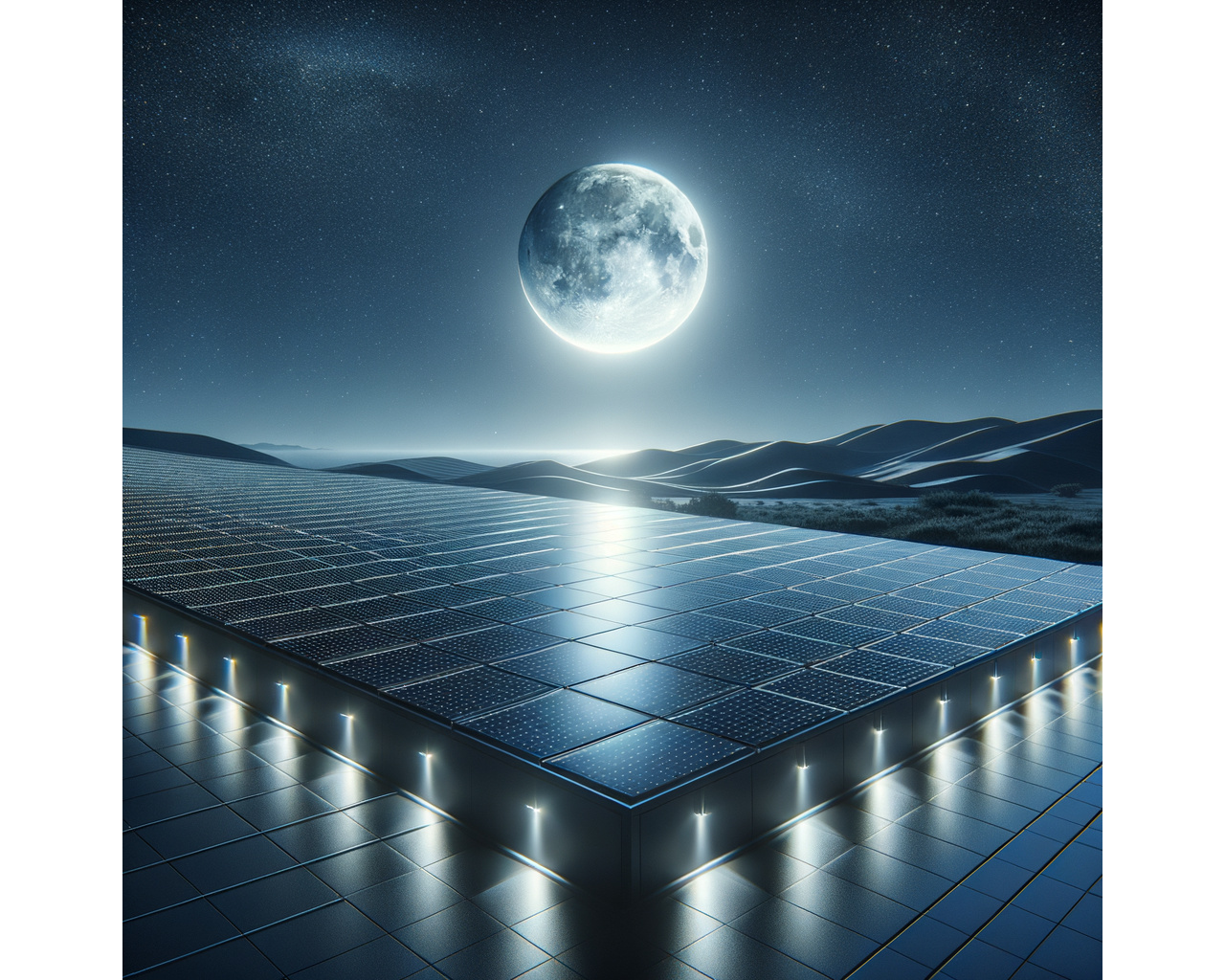Guided by Elon Musk, the new class of solar modules that Tesla has just launched—the Tesla LunaRoof—can produce electricity from light reflections from the moon. Quite an innovative leap and the announcement came right from the Tesla Giga factory in Nevada, where enormous strides are being taken in securing alternative sources of energy.
The Tesla LunaRoof and AI-powered nighttime solar energy
Revolutionary in that it features innovative materials and artificial intelligence as part of its way to expand power generation into the night, the Tesla LunaRoof is revolutionary. Its technology harnesses the modern marvel of engineering—Chronolithyst, a kind of synthetic crystal.
Such technology, with features developed in collaboration with scientists from Stanford University, amplifies sunlight to great proportions. At the molecular level, structures have features that will resonate with incoming photons from both ultraviolet and infrared light, increasing the sensitivity of solar panels by far.
This then makes it possible for the panels to turn the relatively low energy in the moon’s light into quite high amounts of electric power—something that a conventional photovoltaic system cannot do.
Tesla LunaRoof’s nighttime energy revolution
One of the longstanding challenges in the solar power industry has been the limitation of generating electricity only during daylight hours, under optimal weather conditions. Traditional solar power systems lose their ability to produce energy after sunset, forcing reliance on grid electricity or stored power, which comes with limitations and costs.
The Tesla LunaRoof would, therefore, be the answer to that problem Tesla LunaRoof aims to address this issue head-on, offering a solution that extends the productivity of solar panels into the night.
Preliminary tests have shown promising results, with the new panels generating between 0.5 to 1.2 kWh of electricity on nights with a full moon. While the efficiency of these panels during less bright phases of the moon is still under study, the potential for consistent night-time energy production is a significant stride towards achieving true round-the-clock renewable energy solutions.
Looking towards the future
While the Tesla LunaRoof is still in its early stages, with the first deliveries expected around the beginning of 2025, the implications of this technology are profound. It represents a paradigm shift in how we think about solar energy, no longer bound by the constraints of daylight or clear skies.
The development also underscores Tesla’s commitment to innovation and its pivotal role in driving the energy transition towards more sustainable sources.
As the global community continues to grapple with the challenges of climate change and the pressing need for renewable energy solutions, Tesla’s LunaRoof stands as a beacon of progress. It not only showcases the potential of combining artificial intelligence with advanced materials but also opens up possibilities for future innovations in renewable energy.
The announcement of the Tesla LunaRoof, despite its initial reception as an ambitious project, has sparked a wave of interest and speculation across the energy sector. Experts and analysts are keenly observing the developments, as the successful deployment of such technology could dramatically alter the landscape of solar energy production.
As we move closer to the anticipated launch date, the world watches with bated breath, eager to see the realization of this pioneering technology and its impact on the pursuit of sustainable, clean energy.
Original story from:https://www.notebookcheck.net/Elon-Musk-unveils-Tesla-LunaRoof-AI-solar-panel-to-generate-electricity-from-moonlight.821249.0.html





